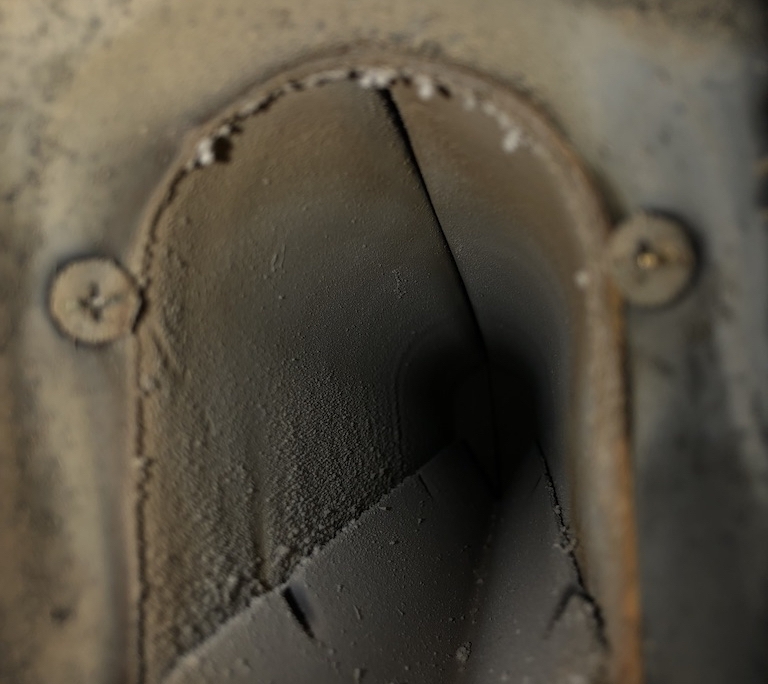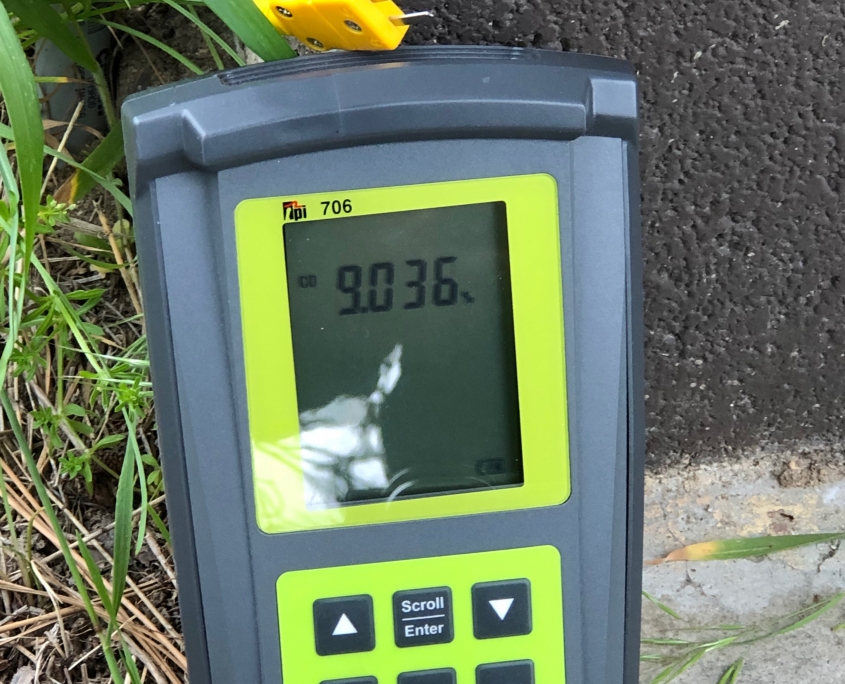Management Companies at Fault in Apartment Carbon Monoxide Poisoning
When a carbon monoxide poisoning happens at a larger apartment complex, the blame is usually shared between the landlord and the property manager. In most cases, the property is owned by someone other than the on-site property manager, even though the property manager may be the only one any of the tenants ever interface with. As we laid out in one of our FAQ pages here, improper staffing levels and poor training of maintenance techs are the biggest reasons management related causes of carbon monoxide poisoning in apartment complexes.
Staffing – One Maintenance Tech per 100 Units
It is the standard in the apartment management industry that each apartment complex should have one maintenance technician (Tech) per every 100 units, plus a maintenance supervisor. Too many apartment complexes have less than that and when vacancies happen in these positions, the replacement person takes way too long to hire. Each case we get into has epic failures in terms of staffing. We have seen cases where staffing was only at 25% of what was required and other cases where techs fraudulently filled out checklists because they did not have time to do all the work required.
What is Routine Maintenance of a Furnace in an Apartment Complex?
What is considered routine maintenance is handled in-house on most large scale properties. The problem is that furnaces require more than routine maintenance. The older the furnace gets, the more non-routine maintenance is required. If an apartment complex is understaffed, there isn’t enough time to do more than change a filter on a furnace, even if the techs had proper training in the more complicated preventive maintenance things that must be done each year.
Further, when the only staff on a complex are inadequately trained, they may not know when it is they need professional help from a licensed HVAC company. There are disincentives in the industry to get better help. The more thorough the maintenance, the more that may be mandated to spend on replacing furnaces and other appliances. The less the general manager of the property knows about the condition of the furnaces, the higher the profit margin – until someone get carbon monoxide poisoned.
One would think that a lawsuit is an expensive lesson, but even after people get poisoned, conditions in apartment complexes may not change.
Inadequate Training of Maintenance Techs Cause Apartment Carbon Monoxide Poisonings
Large apartment complexes to the calculus that it is cheaper to have in-house maintenance people than to contract it out to HVAC companies. From a strictly budgetary perspective that might be justifiable if the service was being done by someone with the same training and experience. It never is. While many maintenance techs have licenses, those are almost only for handling refrigerants in air conditioners, not HVAC work on furnaces. Furnace manufacturers and trade groups require that expert maintenance be done on all furnaces.
The American National Standards Institute (ANSI) has joint standards with the Air Conditioning Contractors of America (ACCA) for maintaining HVAC equipment (ANSI/ACCA Standard 4 QM 2013/2019). The checklist includes inspection of the heat exchanger (5.4.q) as well as the performance of a combustion test (5.4.cc.).

Failure to check for cracked heat exchangers is one of the leading causes of Apartment Carbon Monoxide Poisonings. The older a furnace, the more likely there will be life-threatening cracked heat exchangers.
Furnaces are not Checked for Cracked Heat Exchangers
To inspect the heat exchangers in many furnaces, it is required to take the furnace apart to do so. That takes time that under-staffed maintenance departments don’t have time to do. An alternative is to watch the flame quality at start-up of the furnace, but if the tech doesn’t know what to look for, that will tell nothing.
We have deposed maintenance techs who have never checked for a cracked heat exchanger in decades of working at apartment complexes. Thus it is not a surprise to hear techs refer to carbon monoxide as carbon dioxide, or CO2.
Combustion Tests are Not Done at Apartment Complexes
The reason that apartment carbon monoxide poisoning may occur is that no noe ever checked whether the furnace was giving off too much carbon monoxide. Ask the question of maintenance techs at large apartment complexes how do they do a combustion test. You will get a highly variable answers. What you are unlikely to get is the correct answer.
For the type of inspection that should be done, see this video:
Two reasons you can bet that a combustion test wasn’t done: First, the techs don’t know how to do them. Second, they do not have a combustion gas analyzer on the property. Don’t be surprised if the only device on the apartment complex grounds to measure carbon monoxide, is the carbon monoxide detectors on the wall in the apartments. Watch the maintenance tech service a furnace in your apartment. If they don’t insert a meter device probe into the exhaust gases of the furnace, as shown in above video, they are doing it wrong.

Only a combustion gas analyzer can be relied upon to prevent apartment carbon monoxide poisoning. This combustion gas analyzer shows CO in the exhaust of this boiler at 9,036 ppm, extremely deadly in there was a breech in the exhaust flue of this unit.
Ask your tech if they have a device to measure carbon monoxide in the exhaust gases, they are likely to show you a device that only detects natural gas or propane, not carbon monoxide. An instrument like this one will not detect carbon monoxide: https://www.lowes.com/pd/Amprobe-Digital-9-Volt-Test-Meter/1000479955 A device like the one to the left will.
How Old is Your Furnace?
The landlord or management company doesn’t like you going inside the maintenance closet, but if you are concerned about whether your furnace is safe, check how old it is. Most furnaces face plates have the year of manufacture printed on them. If that date is before 1995, your furnace is beyond its useful life. 25 years is the normal life expectancy of a furnace. If it is before 1990, it is well past its life expectancy, yet until there has been a carbon monoxide poisoning, it will probably not get replaced. In our experience, half of the furnaces older than 1990 may have cracked heat exchangers.
Carbon Monoxide Alarms in Apartments
A quick parting word about apartment carbon monoxide poisonings and carbon monoxide alarms in apartments. CO Alarms are now almost universally required. Yet, in too many cases, no one is auditing to make sure they are there. In many places, the requirement to have them is more recent than the construction date of the complex and unless there is an incident, no one may pay any attention as to whether the detector is a carbon monoxide alone alarm, a combination smoke/carbon monoxide alarm or just a smoke detector. The last two look a lot alike. Take a picture with your cell phone and read the words carefully. If it doesn’t say carbon monoxide on your detector, call your landlord at once.
We are also now getting to the point that apartment carbon monoxide poisonings may occur because the carbon monoxide alarms that were required 5 to 10 years ago by new statutes, have expired. CO alarms have a much more limited life than smoke detectors do, because they work on different principles. CO alarms emit a chemical to detect the CO and when that chemical is used up (usually 5 to 7 years) the alarms no longer work. Check the manufacture or expiration date on the back of your alarm. Replace if it is more than five years old. Call the management company to insist they check this.

Our carbon monoxide detectors went off EVERY single month at least once In our apartments because we were attached to a 5 story ENCLOSED parking garage with ZERO ventilation & detectors that were totally inoperative in the garage because wiring was totally faulty, ( jump cable missing, water logged detectors, & wiring completely wrong)the two huge exhaust fans on top of the garage were also inoperative & never came on & proven to not even work by the health dept. Our gate to exit said garage never worked & cars would back up inside the garage almost to the elevator leading right into our building & apartments. 3 people in SEPARATE apartments went to the ER on separate occasions,one with a COHB of 9.7. All 3 have brain scans & brain damage consistent with CO poisoning. There is a 72 page health dept report that documented everything. There are pictures of a detector at 190ppms, several audios of the detectors sounding constantly with the 4 beeps indicating carbon monoxide, management instructed residents to knock them off the ceiling when they were sounding because it was not considered a maintenance emergency. One resident fell backwards off a chair while being instructed on the phone by after hours management to knock the detector off the ceiling because it wouldn’t stop alarming! No one ever responded to the event. Why is it hard prove how CO got into the apartments attached to a 5 story enclosed garage with ZERO ventilation & an elevator on every floor? The owner & managers were the same entity & even bragged in a national publication for that deferred maintenance was a top five strategy they used to save money! It’s documented that 86% of the work orders over a year were directly related to the CARBON MONOXIDE DECTECTORS going off. Why would this case be hard to prove? Please help explain